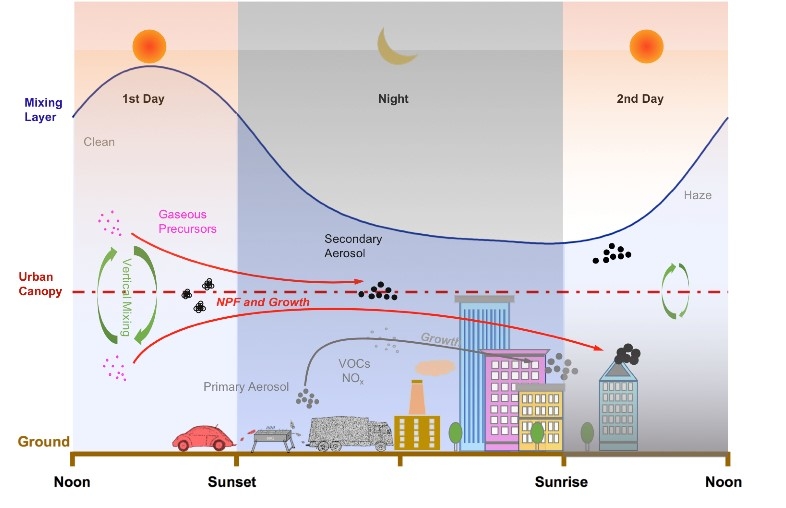
New particle formation (NPF) is a major source of aerosol particles in global atmosphere. However, the role of NPF events and their contribution to haze formation through subsequent growth remain unclear.
To improve the understanding of the sources, meteorological conditions, and chemistry behind air pollution, a joint research team led by Prof. SUN Yele with the Institute of Atmospheric Physics (IAP) of the Chinese Academy of Sciences and Prof. Markku Kulmala with the University of Helsinki performed simultaneous measurements of aerosol composition and particle number size distributions at ground level and at 260 m in central Beijing, China, during a total of four months in 2015-2017.
Their study was published in npj Climate and Atmospheric Science on Jan. 18.
"The haze formation is initiated by the growth of freshly formed particles at both ground level and city aloft. However, the haze was more severe at ground level because of higher particle growth rates impacted by local primary particles and gaseous precursors," said Prof. SUN.
According to Prof. SUN, the particle growth creates a feedback loop: A further development of haze increases the atmospheric stability, which in turn strengthens the persisting apparent decoupling between the two heights and increases the severity of haze at ground level.
The team further complemented field observations with NAQPMS+APM model analyses, and found that the haze associated with NPF and growth was formed on a regional scale in Beijing-Tianjin-Hebei area. Prof. SUN said, "The growth of NPF-originated particles accounts for up to ~60% of the accumulation mode particles, and drives the haze formation in the Beijing-Tianjin-Hebei area."

A schematic plot to show enhanced particle growth by local primary emissions contribute to more severe haze at ground level. (Image by SUN Yele)
The team also performed simulations on how emission reductions would affect haze development. "Concentration of both primary and secondary particles in the accumulation mode would decrease drastically, and the haze formation would be reduced if the emission cuts are higher than 30%," said Prof. SUN. "Our results show that a reduction in anthropogenic gaseous precursors can suppress particle growth, and therefore is a critical step for haze alleviation."

86-10-68597521 (day)
86-10-68597289 (night)

52 Sanlihe Rd., Xicheng District,
Beijing, China (100864)

